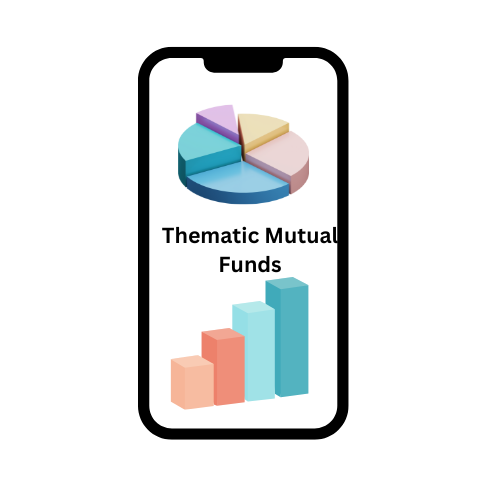Debt mutual funds are interesting products that allow one to invest across a spectrum of debt papers and tenures, credit quality and originators. MF schemes are well-diversified within sub-categories such as short-term, banking and PSU debt, and corporate debt, based on duration, credit quality and originators. MF schemes offer good diversification, professional portfolio management, carry forward of losses for up to eight years, and excellent liquidity. But how to analyse which debt mutual funds are better to invest?? Let us understand this in detail.
What is Debt Mutual Fund???
A debt fund is a mutual fund scheme that invests in fixed income instruments, such as Corporate and Government Bonds, corporate debt securities, and money market instruments etc. that offer capital appreciation. Debt funds are also referred to as Income Funds or Bond Funds.
How Does Debt Fund Work??
Debt funds invest your money in various debt instruments, such as corporate or government bonds. They invest in these instruments at lower cost and sell them later on margin in the future. The difference between the buying and selling price of the instrument increases or decreases the NAV of the fund. If the selling prices are higher than the buying price, it results in appreciation in NAV; however, if it is lower, it leads to depreciation in NAV. As they invest in debt instruments, they regularly receive interest, similar to Bank FDs. These interest incomes are added to the fund, increasing its NAV. NAV of the debt funds also gets influenced by the interest rate of the underlying assets and their credit rating. As interest rates change in the market, the price of a bond also changes. For example, if the market interest rates go down, it usually means new bonds will have lower annual interest rates. Let’s take an example to understand this:
Assume your fund has invested in a debt instrument offering an annual interest rate of 8%. But now, after a fall in the market interest rate, they might be issued with 6% annual interest. This change may increase the price of the 8% bonds to match the return of lower interest rate bonds. As a result, when the bond price increases, it increases the NAV of the fund.
Types of Debt Mutual Funds
Picking the best debt fund doesn’t have a recipe. It is hard to clarify what ought to be the specific cycle for arriving at the best funds to invest in. Interest in common assets ought to be done after careful thought and exhaustive industriousness about the plan. Considering the diversity of the market given below are the wide variety of debt mutual funds suitable for investors of all kinds coming from all sorts of financial backgrounds.
- Dynamic Bond Funds
The word dynamic itself suggests “rapid or unexpected change.” Dynamic bond funds seek to maximize investor returns through active and ‘dynamic’ portfolio management by switching the investment portfolio depending on the market situations and variances. However, it is the most suitable option for a moderate investment. The investment horizon or the maturity period is of 3-5 years.
- Corporate Bond Funds
The corporate bond funds would suit the investors who are inclined to take less risk, be willing to generate moderate returns out of the investment, and seek to invest in quality bonds. At least 80% of its overall assets are held in corporate bonds that have the best ratings.
- Money Market Fund
They are suitable for investors looking to invest in a deal involving low risk and realistic returns. Money market funds include instruments with high credit ratings and debt-based securities with short-term maturity. Making money market funds a safe ground for investment with high liquidity.
- Liquid Funds
Liquid funds are for those who seek to invest their hard-earned money precisely in one of the most risk-free alternatives to fixed deposits. Liquid funds rarely yield negative returns. Accumulated funds in this kind of mutual fund can be encashed easily. However, all the schemes, instruments, and securities in the liquid funds have a maximum maturity period. The benefits through these funds are fundamentally realized by investors who are willing to play a safe game.
- Credit Option Funds
Unlike the other debt mutual fund, it works more on anticipation and involves high risk. The primary mindset here is to invest in low-rated bonds, securities, and other financial instruments that are expected to do good in the future, thereby attracting investors willing to take a calculated risk. The market research here is typically based on predictions and anticipation for a future price rise of the security.
- Short-Term and Ultra Short-Term Funds
This investment scheme is popular among budding writers who seek to invest in a deal for a short period. It involves securities that are exposed to minimum risk. It has one of the most temporary maturity periods of 1 year. Moreover, the return on investments is not influenced much.
- Gilt Funds
Gilt funds are about funds that carry a shallow risk, which means they are purely stable and secure for investments—natively investing in government bonds and securities held by the central government.
- Fixed Maturity Plans
Fixed maturity plans have some features standard like fixed deposits. These schemes have a mandatory lock-in period that stretches depending upon the selected scheme. It has a rigid structure of the investment. This means if you have invested in the initial phase, this scheme restricts you from doing it repeated.
Key Factors to Analyse Debt Mutual Fund
1. Duration
It measures sensitivity of the underlying bond prices to changes in interest rate. It’s calculated in years. Higher the duration, the more sensitive the underlying papers are. Liquid funds have shortest modified duration and hence are least sensitive to interest rates. Short-term debt funds have high modified duration than liquid funds. Whereas long-term debt funds have the highest modified duration
For example:
- Average modified duration of liquid funds is 0.15 years.
- Average modified duration of short-term debt funds is 2.18 years.
- Average modified duration of long-term debt funds is 4.68 years.
Investors with a low-risk tolerance and a short-term investment horizon should stick with liquid funds or short-term debt funds. Investing in long-term debt funds is not recommended for conservative investors.
2. Macaulay Duration
Macaulay Duration of the debt fund tells an investor when they will be able to recover the principal amount that they have invested. It is a measure of how long it will take for the ‘Principle’ of a bond to be repaid from the internal cash flows (earnings from interest and repayments) generated by the bond. This means that debt funds that have a longer Macaulay Duration will take longer to recover the principal amount invested from the bonds they hold in their portfolio.
It generally means that debt funds that have longer Macaulay Duration have greater exposure to longer maturity bonds as compared to schemes with shorter Macaulay Duration. Let us assume an investor has invested in a 10-yr bond with a 12% coupon having a face value of Rs. 1,000. The bond will give interest of Rs. 120 every year, hence an investor will recover the investment in 8.3 yrs before the maturity of the bond.
3. Average Maturity
In the case of an individual bond, Maturity refers to the time period after which the initial investment, i.e., the Principal, is repaid by the Bond Issuer to the Bond Holder. Debt Mutual Funds invest in multiple bonds with different maturities. So to calculate the Average Maturity of a Debt Fund, you have to use the weighted average method to determine how much time it will take for all the bonds in the fund’s portfolio to mature. The weights are the percentage holding of each security in the portfolio. Average maturity is the weighted average of all the current maturities of the debt securities held in the debt fund.
4. Yield to Maturity
Yield is the earning from our investments over a particular period, including all the interim cash flows. The dividends earned from stocks or the interests earned on debt instruments are considered for yield calculation. Yield is expressed as the percentage of the face value of the instrument or the current market value. It is a part of the total return, which considers all the cash flows from the investment. Yield to maturity (YTM) is defined as the total return that you can expect from your investments in bonds, provided you hold the bond till its maturity and all the proceeds of the bond are reinvested in the same as well. Since stocks do not have a maturity date, this concept applies to bonds only.
Yield to Maturity = Total Interest Earned from the Bond over the years/ Face Value of the Bond
Bonds pay interest to the bondholders. So, if you need to evaluate and make an informed investment choice about which bond to purchase, you need to calculate the present value of all these future coupons. Yield to Maturity measures the current value of all future coupons of the bond by reinvesting all the coupon payments in the same bond. It is mostly expressed in annual terms.
5. Credit Rating
A credit rating is a quantitative assessment of a specific debt instrument, most commonly a bond that has been issued by a company. Every bond transaction has two counterparties to a deal – the borrower (or the company) and the lender (usually a bank). An associated credit rating helps the lender determine the
- a) Risk of default to the instrument – Higher the rating, lower the risk
- b) Rate of interest – Higher the credit rating of the borrower, lower is the risk of default. So, the lender charges a lower rate of interest to the borrower.
In India, there are six rating agencies registered under SEBI (Securities and Exchange Board of India). These are CARE, ICRA, CRISIL, India Ratings, SMERA and Brickwork Ratings. Of these, S&P owns CRISIL, the largest credit rating agency in India; Moody’s is the parent of ICRA and Fitch Ratings maintains India Ratings. All of them are globally recognized credit rating companies.
When it comes to long term ratings, the scale for all credit rating agencies is broadly similar. Tabled below are the rating symbols and their corresponding description.
Instrument Rating | Rating Symbols |
Highest Safety | AAA |
High Safety | AA |
Adequate Safety | A |
Moderate Safety | BBB |
Moderate Risk | BB |
High Risk | B |
Very High Risk | C |
Default | D |
AAA is the rating assigned to instruments that carry the lowest credit risk. The reason is that it has the highest degree of certainty when it comes to servicing its debt obligations. On the other hand, D is a rating given to an instrument that has either defaulted or is likely default. There is an added sign – “+” or “-“attached to grades from AA to C, which reflects the comparative standing of the instrument within the category. For example, a bond that is rated AA+ is comparatively safer than AA-, although both of them fall within the same “High Safety” category. The rating symbols for short term ratings are slightly different from those above. CRISIL, for example, has A1, A2, A3, A4, and D as the credit rating symbols for short term debt. “+” and “-“signs denote the relative safety within a category.
6. Benchmark
Debt funds’ performance is measured against a benchmark index, just like an equity fund. This helps an investor see how the fund has performed against its benchmark since inception. Though not the ideal way to determine future performance, it provides an insight into how well the fund has been performing in the past. Once investors understand how to apply these concepts to create a robust debt investment strategy, it is easier for them to make a well-informed decision of choosing the right fund that suits their risk appetite as well as their financial goals. It is advisable to always read and understand all the details about the fund before investing.
Conclusion
Debt funds are less volatile than equity mutual funds but they are not 100% risk-free. Debt funds face market risks, credit risk and interest rate risks. Their NAVs are linked to the market and can experience high fluctuations. For example: After Yes Bank was put under moratorium, the NAV of Nippon India Strategic Debt Fund fell by 23% in a span of 3 days. However, there are debt funds which carry almost zero default risk like liquid funds, gilt funds etc. These debt funds are 100% safe from credit risk.





